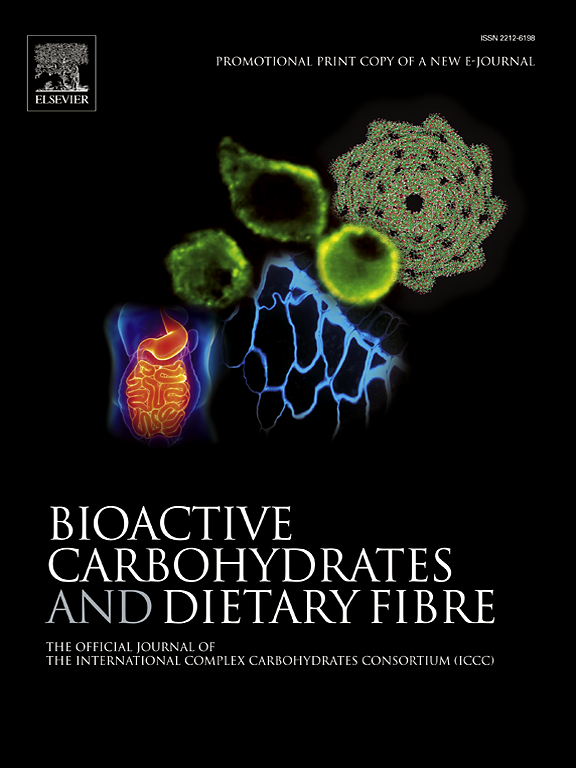Enzymatic synthesis of analogous human milk oligosaccharide and its prebiotic attributes
IF 3.6
引用次数: 0
Abstract
Human milk oligosaccharides (HMOs) are the third most abundant component of human milk and deliver a myriad of benefits to infants including inhibiting the growth of pathogens and promoting the population of Bifidobacterium. In this study, glycoside hydrolase family 94 (GH94) member cellodextrin phosphorylase (CDP) has been used to synthesize a trisaccharide (Gal-β-1,4-Gal-β-1,4-Glc) in milligrams by transferring a galactose unit on cellobiose that mimics the primary building block of HMOs. Previous study of saturation transfer difference nuclear magnetic resonance spectroscopy indicated that the phosphate group of glucose-1-phosphate (Glc-1-P) makes hydrogen bonds with the side chain of H817, R486 and S889, and the backbone of G890, as well as a salt bridge with R486. We employed site-directed mutagenesis to determine the roles of these residues in synthesizing analogue HMO using galactose-1-phosphate (Gal-1-P). We did alanine scanning of these residues and found that mutation of R486A and G890A residues led to enzyme inactivation. Whilst mutation in H817A and S889A residues led to decreased enzymatic activity. These results further suggested that Gal-1-P bound at the donor site similar to a cognate donor (Glc-1-P). Using the native CDP, 40 mg of analogue HMO trisaccharide was produced with a 66 % yield. The product was well purified and analytically characterized. This trisaccharide is found to support the growth of probiotic bacteria such as Bifidobacterium longum, Roseburia faecis, and Blautia producta.

酶法合成类似人乳低聚糖及其益生元特性
母乳寡糖(HMOs)是母乳中第三丰富的成分,对婴儿有无数的好处,包括抑制病原体的生长和促进双歧杆菌的数量。在本研究中,糖苷水解酶家族94 (GH94)成员纤维素糊精磷酸化酶(CDP)通过在纤维素二糖上转移半乳糖单元合成了以毫克为单位的三糖(Gal-β-1,4-Gal-β-1,4- glc),模拟了HMOs的主要组成部分。以往饱和转移差核磁共振波谱研究表明,葡萄糖-1-磷酸(Glc-1-P)的磷酸基与H817、R486、S889侧链和G890主链形成氢键,并与R486形成盐桥。我们采用定点诱变来确定这些残基在使用半乳糖-1-磷酸(Gal-1-P)合成类似HMO中的作用。我们对这些残基进行了丙氨酸扫描,发现R486A和G890A残基突变导致酶失活。而H817A和S889A残基突变导致酶活性降低。这些结果进一步表明,Gal-1-P结合的供体位点与同源供体(Glc-1-P)相似。利用天然CDP,以66%的收率制备了40 mg的类似HMO三糖。该产物经过了良好的纯化和分析表征。这种三糖被发现可以支持益生菌的生长,如长双歧杆菌、粪蔷薇菌和蓝藻产品。
本文章由计算机程序翻译,如有差异,请以英文原文为准。
求助全文
约1分钟内获得全文
求助全文
来源期刊

Bioactive Carbohydrates and Dietary Fibre
Agricultural and Biological Sciences-Food Science
CiteScore
6.00
自引率
0.00%
发文量
38
期刊介绍:
 求助内容:
求助内容: 应助结果提醒方式:
应助结果提醒方式:


